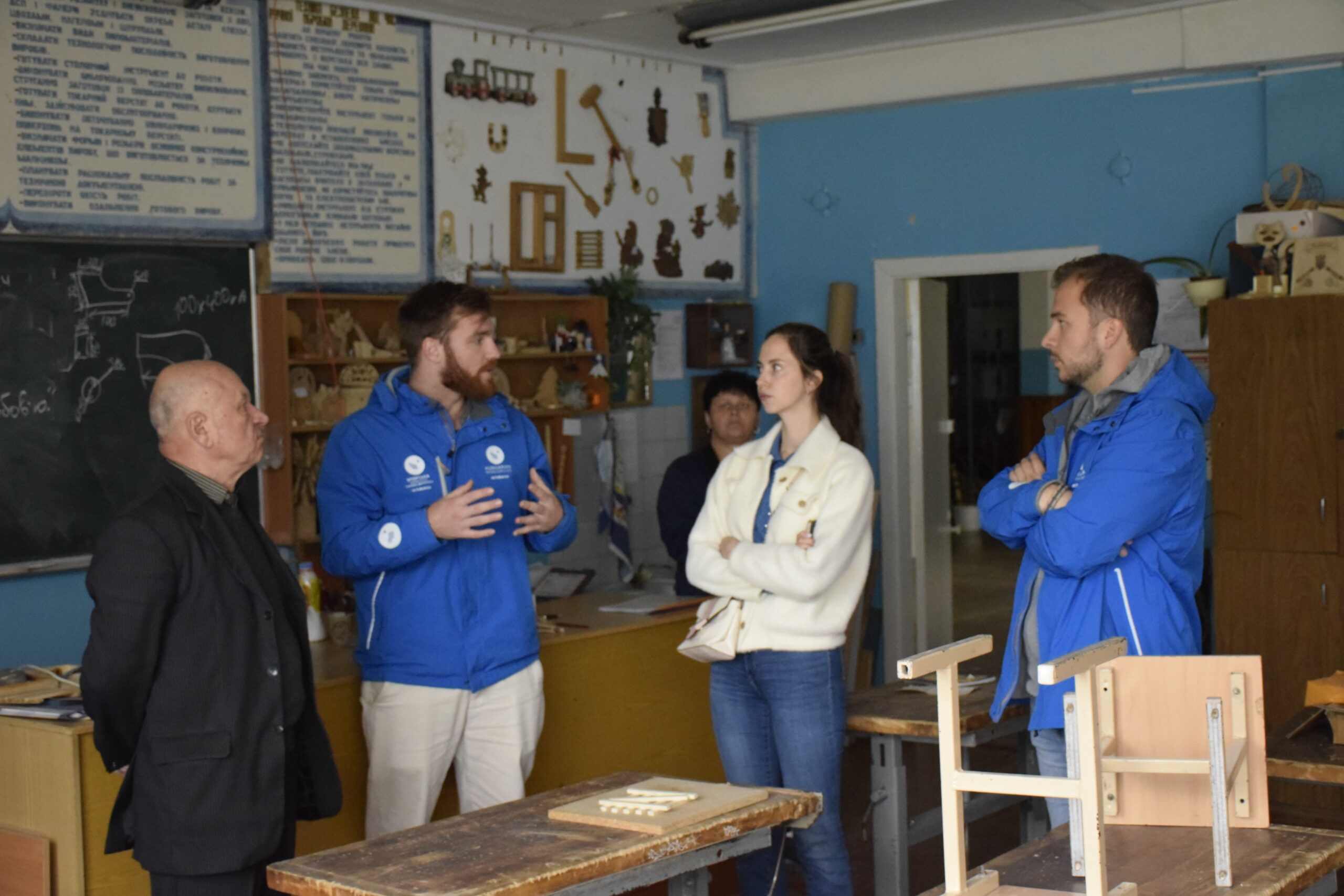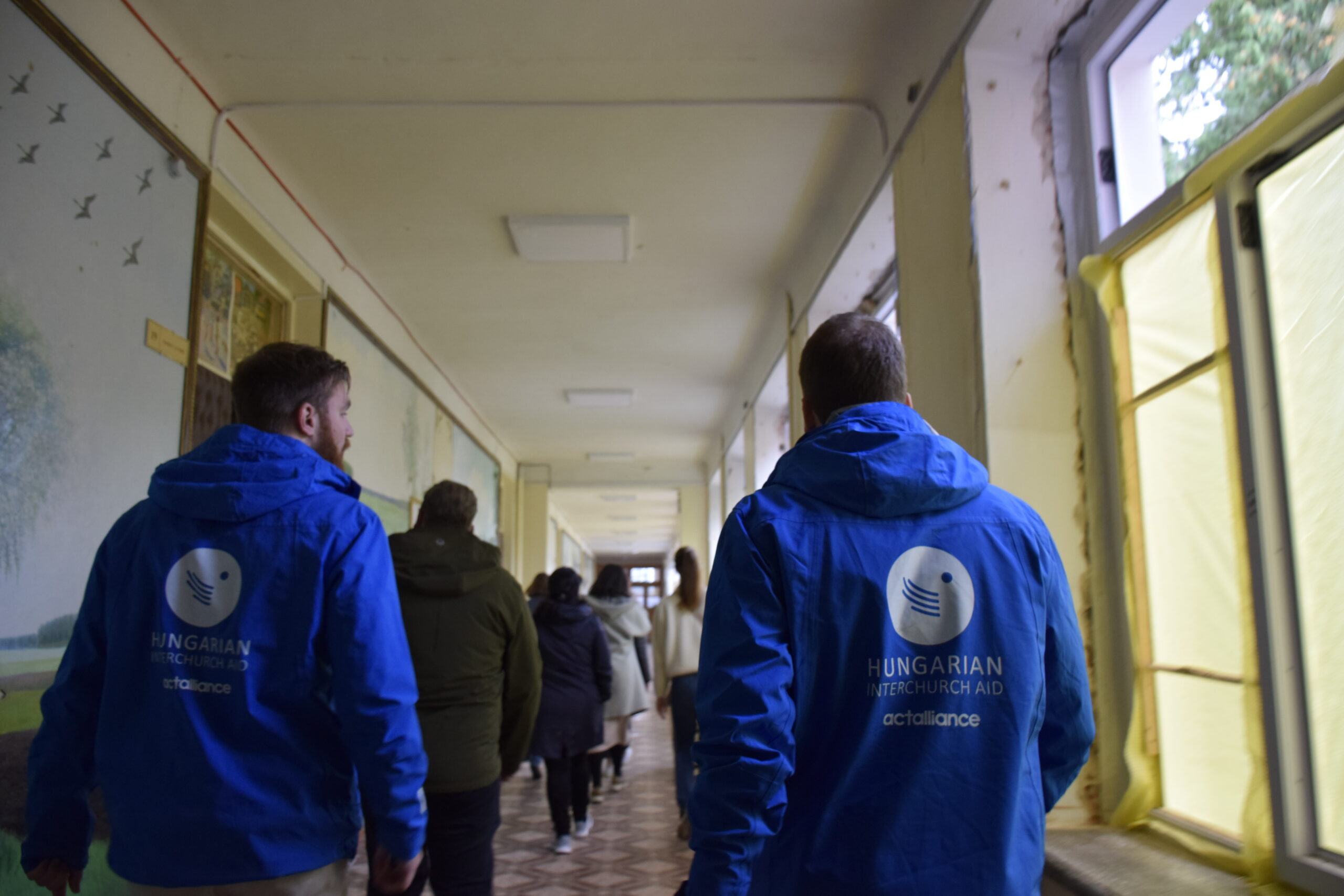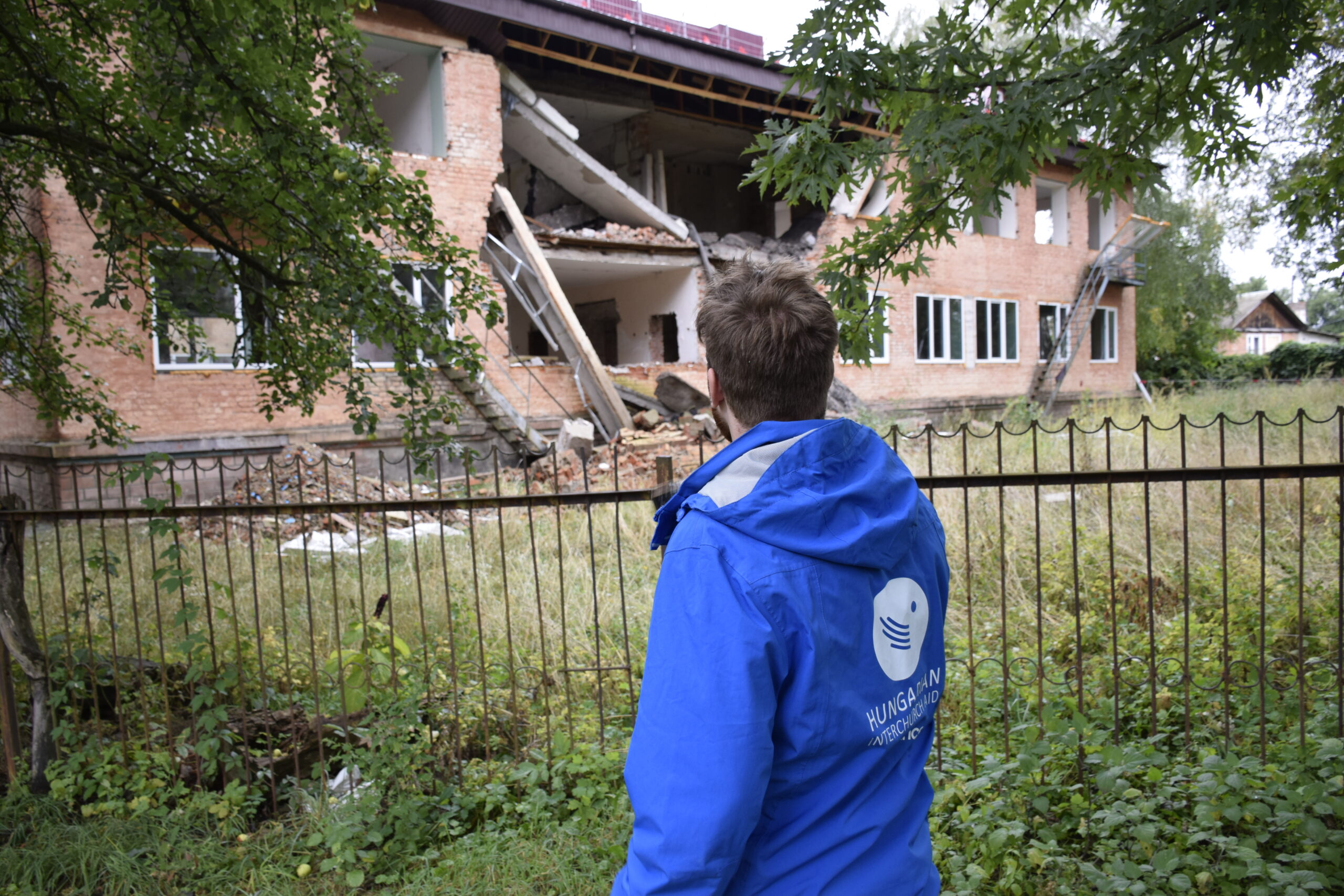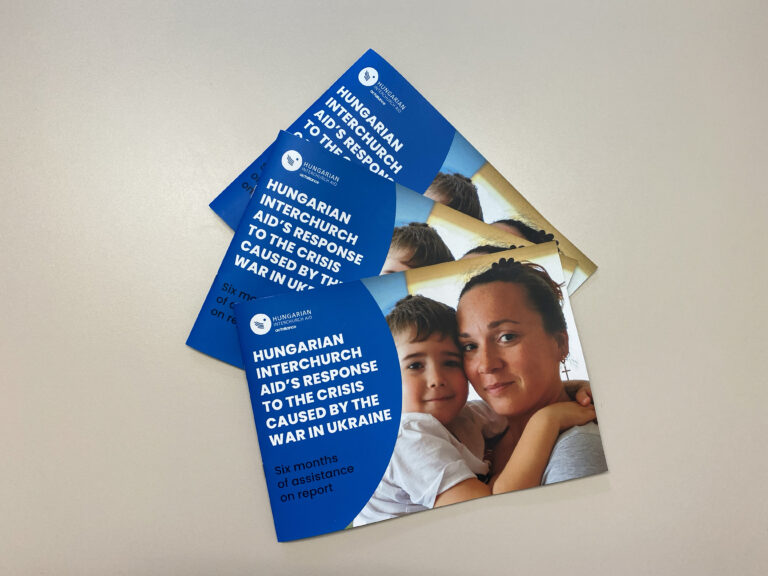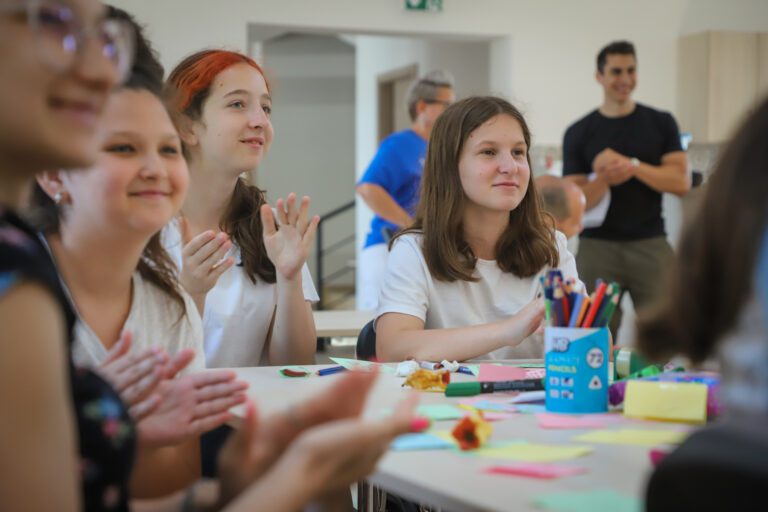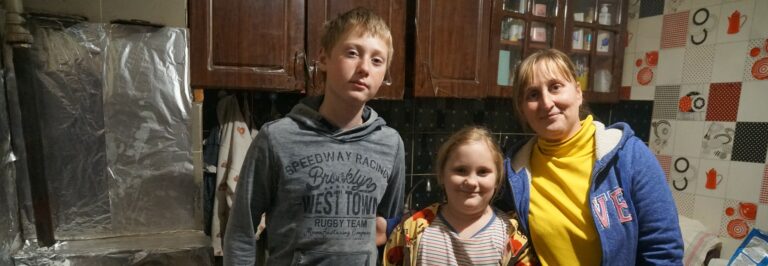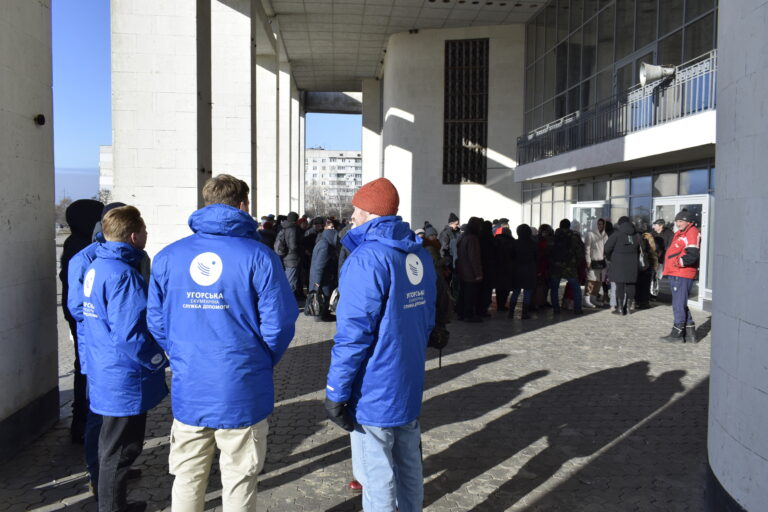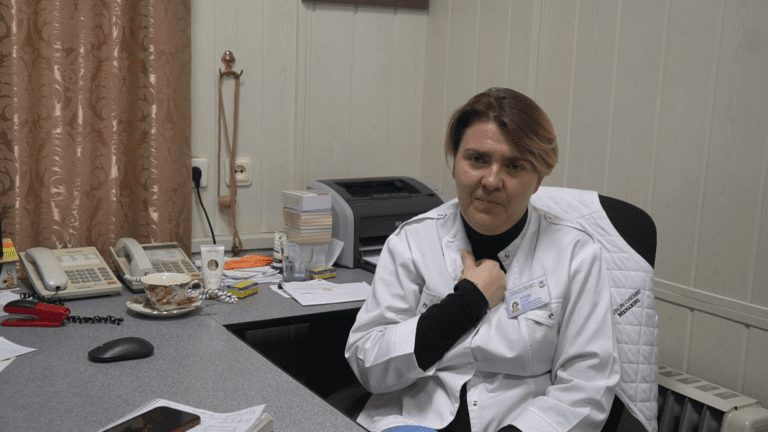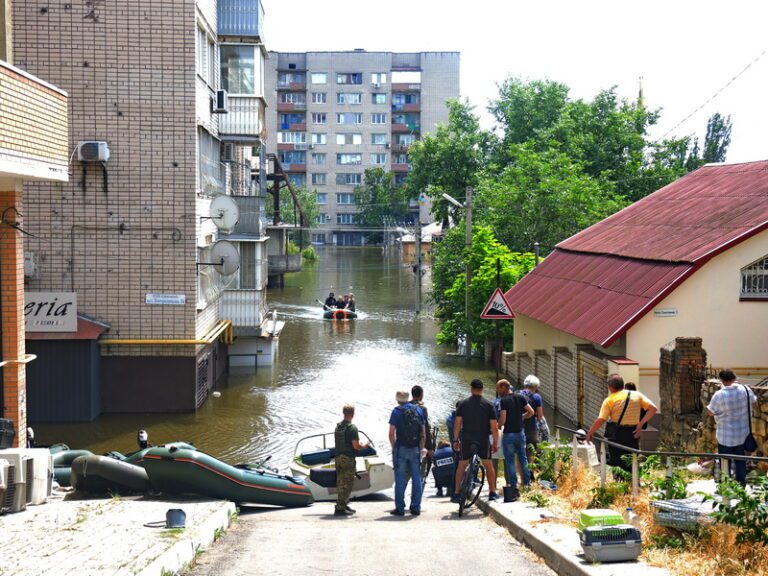First day of school overshadowed by the marks of war
Many settlements in the areas where war left its ugly mark are now safe enough to return to. That is, if there is a place to return to. Still many continue to live in community shelters, container homes and other temporary accommodation. This is the environment in which many of the children have to prepare for the first day of school, which wasn’t the same for everyone. How and where children receive their education greatly varies across the country, with many of the schools destroyed and damaged through fighting. When the pupils of these institutions may return to their classrooms remains a question for the future, since the needs to repair the buildings are immense.
Safety first, education later
The restoring of order and security in the communities that have suffered from the fighting does not guarantee the resumption of critical public services such as education. It seems self-evident that the consequences for children who are deprived of the possibility of attending school due to their homes being in the occupied or conflict zone are severe. After two years of COVID-19 measures and 6 months of war online education is also taking its toll on the pupils – time spent in the classroom plays an important role in their personal development and social skills among other things as well. It also places a heavy burden on parents, since their children cannot be left alone at home.
This week, Hungarian Interchurch Aid conducted surveys in Chernihiv, northern Ukraine. According to their findings, the main problem in the area remains the lack of windows, which were damaged by the explosions caused by intensive military activity. As temperatures drop at the beginning of autumn, windowless classrooms were deemed unfit to receive pupils. Many educational institutions are also splattered with shrapnel- and bullet holes in their walls, a memento of the armed combat that plagued the region. The sight of such damage can trigger the children, causing them to relive the traumas of war – this is why no classes can be held in such conditions.
To ensure that children who are unable to participate in offline education due to the state of their schools may finally return to school once again, HIA and its partners are launching several projects in Chernihiv and its surroundings. Aim of these projects is refitting and renovating the damaged classrooms as soon as possible.
The school of Zahal’tsi, in the former warzone of the Kyiv agglomeration, is a prime example of the devastation that was caused by the war in Ukraine’s educational institutions. The school used to host 300 pupils, but in its current state that would be simply impossible. In order for life and children to return to the halls of learning, Hungarian Interchurch Aid pledged the complete renovation of the school. You can read and watch our report on the renovation project here.
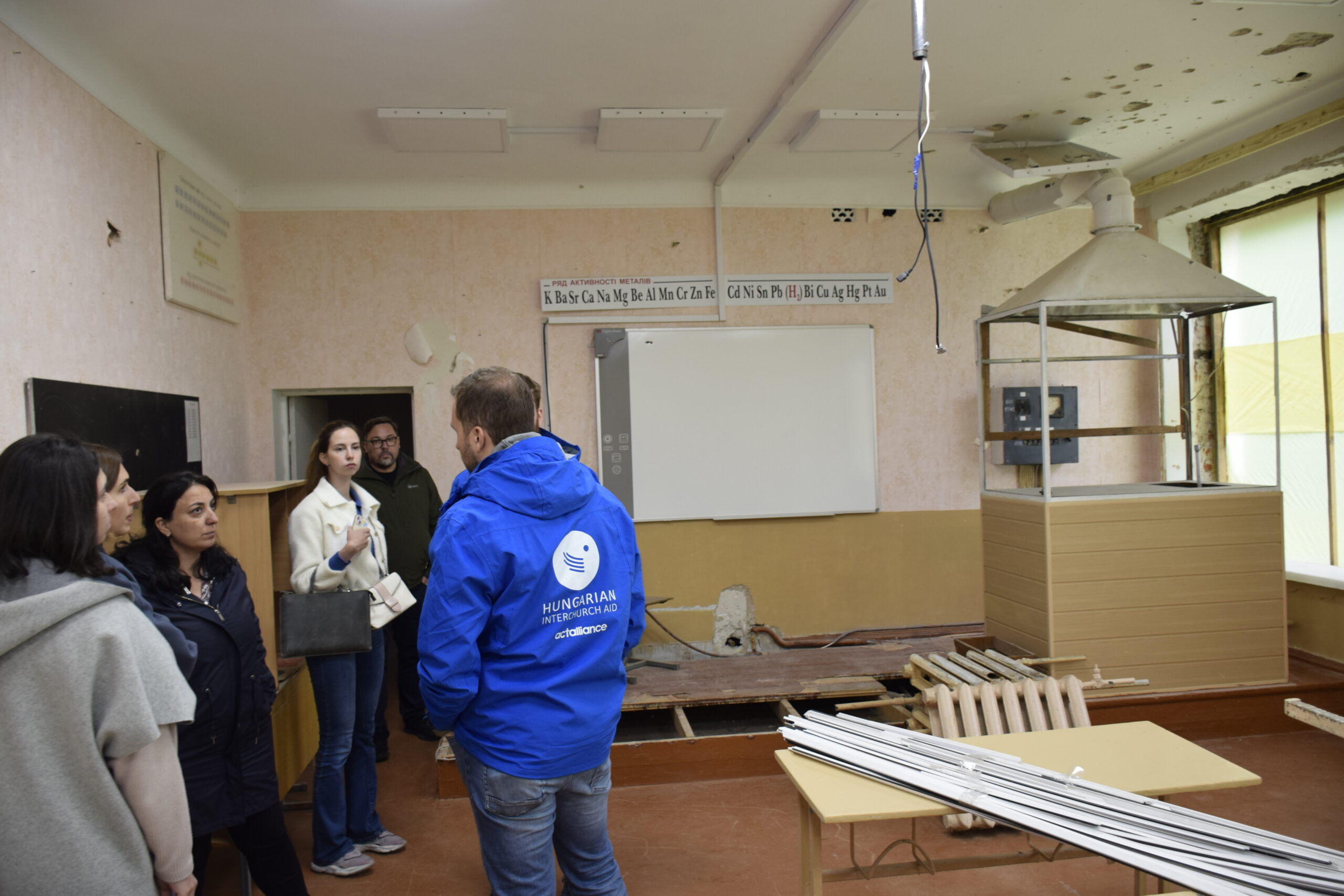

Online, offline
Ukrainian authorities have tried to remedy the situation by transferring students to schools that received permission to operate. A further condition was set by them: all schools had to have at least one dedicated bomb shelter, or a basement fitted for such purposes. All of these requirements meant that a significant amount of children had to switch schools to be able to attend their classes, and even more had to start this year in remote learning – again.
This situation is reflected by the statistics published by the Ukrainian Ministry of Education as well. Out of the almost 13 000 educational institutions of Ukraine, only 3100 schools resume their activities in a traditional sense. A further 4000 are operating a mixed system, providing both remote and traditional education to their students. The rest – approximately 5700 schools – are not meeting the requirements of the authorities, and thus have to continue remotely. Since many of the latter are located in occupied territory, this is understandable. At least this way the education of the internally displaced children is still possible.
Zakarpattia, a region barely scathed by the horrors of war hosts a large number of the internally displaced people within Ukraine. Here, the majority of schools have resumed their activities, and HIA has been quick to help. In total, 250 children in need have received school kits in and around Berehove at the start of the schoolyear.
